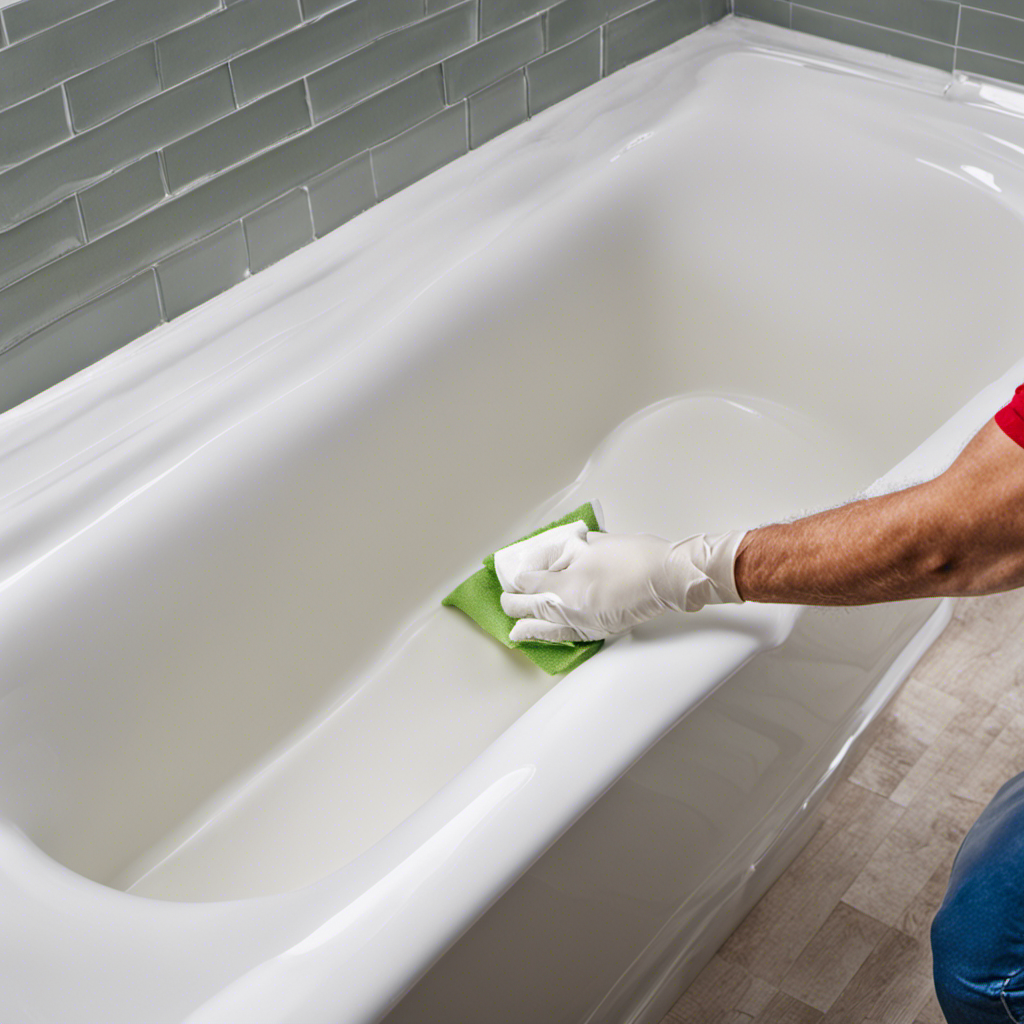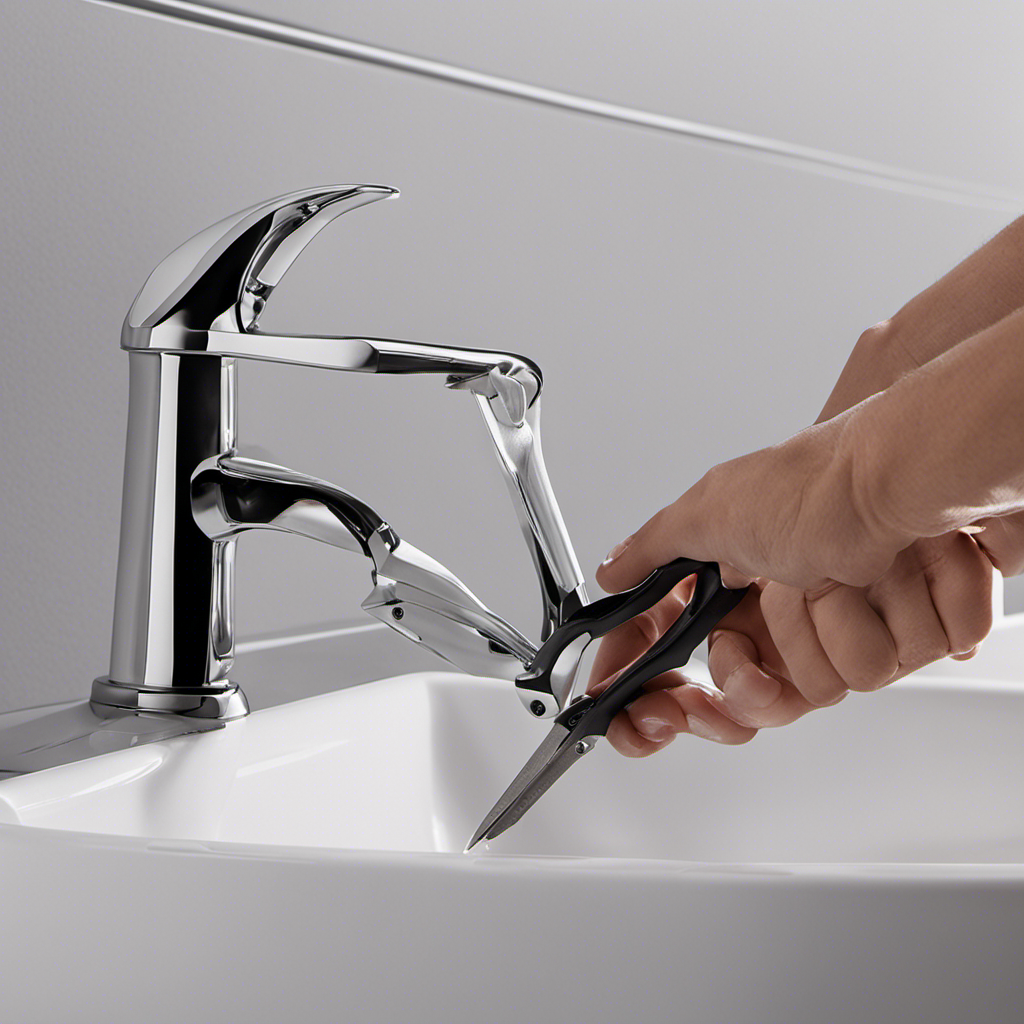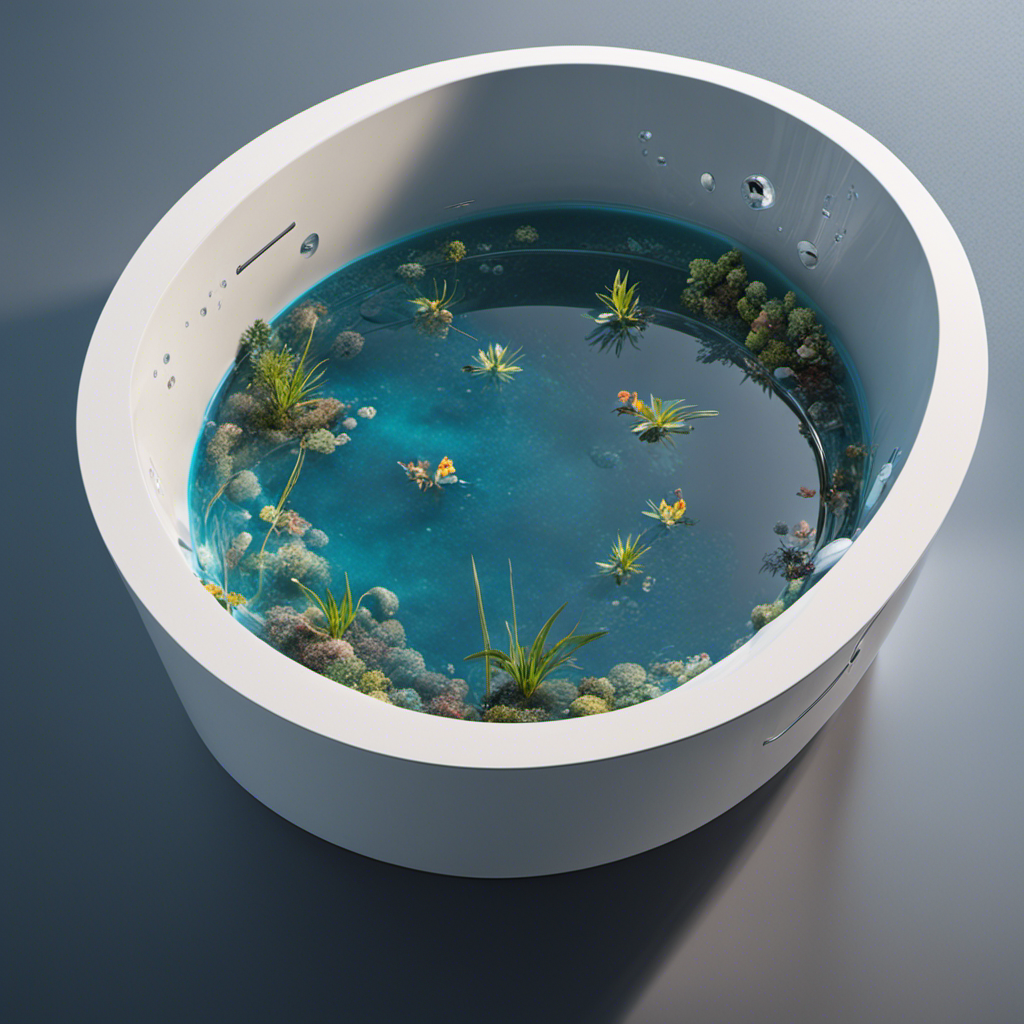Did you know that a moldy bathtub can be a breeding ground for harmful bacteria and allergens? If you’re like me, the thought of that is quite unsettling.
But fear not, because in this article, I’ll guide you through the process of recaulking your moldy bathtub, ensuring a clean and healthy environment for you and your family.
With just a few tools and materials, you’ll be able to remove the old caulk, treat the moldy areas, and apply new caulk, preventing future mold growth.
Let’s get started!
Key Takeaways
- Recaulking prevents mold growth in the bathtub.
- Moldy caulk can be unsightly and ineffective at sealing out water.
- Cleaning and treating moldy areas is necessary before applying new caulk.
- Regularly cleaning and drying the bathtub, along with ensuring proper ventilation, helps prevent future mold growth.
Understanding the Importance of Recaulking
You can’t underestimate the importance of recaulking your bathtub to prevent mold growth.
When the caulk around your bathtub starts to deteriorate or crack, it creates an ideal environment for mold to grow. Mold thrives in moist and warm conditions, and a bathtub that isn’t properly sealed can provide the perfect breeding ground.
Mold can affect your bathtub surfaces in multiple ways. First, it can stain and discolor the caulk, making it look unsightly. Second, it can eat away at the caulk, causing it to become weak and ineffective at sealing out water.
Gathering the Necessary Tools and Materials
To get started, make sure you’ve got all the tools and materials you’ll need for the job.
The first thing you’ll need is the right caulk. When choosing the right caulk for recaulking a moldy bathtub, opt for a silicone-based caulk. This type of caulk is resistant to water and mold, making it perfect for bathroom use.
Additionally, you’ll need a caulk gun to apply the caulk evenly and smoothly. Other essential tools include a utility knife, a scraper or putty knife for removing the old caulk, and a cleaning solution to remove any mold or mildew.
Proper ventilation is crucial when recaulking a moldy bathtub. Open windows and use fans to ensure sufficient airflow and prevent the buildup of fumes from the cleaning solution and caulk.
Removing the Old Caulk
When removing the old caulk, it’s important to use a utility knife or scraper. This will help you safely and effectively remove the caulk without damaging the surface of your bathtub. Here are some steps to follow:
-
Prepare the area: Before you start removing the caulk, make sure to clean the surrounding area thoroughly. This will ensure that the caulk remover works effectively.
-
Choose the right caulk remover: There are various caulk removers available in the market. Look for one that is specifically designed for removing bathroom caulk and is safe for the material of your bathtub.
-
Apply the caulk remover: Follow the instructions on the caulk remover product and apply it generously over the old caulk. Allow it to penetrate for the recommended time.
-
Remove the caulk: Once the caulk has softened, use a utility knife or scraper to carefully scrape away the old caulk. Be gentle to avoid scratching the surface of your bathtub.
Cleaning and Treating the Moldy Areas
Once you’ve removed the old caulk, it’s important to thoroughly clean and treat the areas affected by mold. Mold prevention is key to maintaining a clean and healthy bathroom environment.
To clean and treat the moldy areas, start by mixing equal parts of white vinegar and water in a spray bottle. Spray the solution onto the moldy areas and let it sit for about 15 minutes. Then, scrub the area with a brush or sponge to remove the mold. For stubborn mold, you can also use a mixture of baking soda and water as a natural cleaner.
After cleaning, rinse the area with water and dry it thoroughly. This will help prevent any remaining mold spores from growing back.
Now that the moldy areas are clean, it’s time to move on to applying the new caulk.
Applying the New Caulk
Now that you’ve thoroughly cleaned the moldy areas, it’s time to apply the new caulk. Here is a step-by-step guide to ensure a proper technique and maximize drying time:
-
Prepare the surface:
- Remove any remaining old caulk
- Clean the area with a mildew remover or bleach solution
- Make sure the surface is dry before moving on to the next step
-
Choose the right caulk:
- Select a silicone-based caulk designed for bathrooms
- This type of caulk is resistant to water and mold growth, ensuring a longer-lasting seal
-
Apply the caulk:
- Cut the tip of the caulk tube at a 45-degree angle
- Load it into a caulk gun
- Apply a thin and even bead of caulk along the joint
- Press it into place with a caulk smoother or your finger
-
Allow drying time:
- Let the caulk dry for at least 24 hours before using the bathtub
- Avoid getting the caulk wet during this time to ensure a proper seal
Maintaining and Preventing Future Mold Growth
When it comes to keeping mold at bay, effective prevention is key.
In order to minimize the risk of mold growth, regular maintenance plays a crucial role.
Effective Mold Prevention
To effectively prevent mold growth in your bathtub, it’s important to regularly clean and dry the area after each use. Mold thrives in damp and dark environments, so taking preventive measures is crucial.
Here are some effective cleaning techniques to keep your bathtub mold-free:
-
Scrub with a bleach solution: Mix one part bleach with ten parts water and use a scrub brush to clean the bathtub. This will kill any existing mold and prevent future growth.
-
Use vinegar: Vinegar is a natural disinfectant and can effectively kill mold. Spray undiluted vinegar on the affected areas and let it sit for a few hours before scrubbing.
-
Keep the area well-ventilated: Proper ventilation is key to preventing mold. Open windows or use exhaust fans to remove excess moisture from the bathroom.
-
Use a mold-resistant caulk: When recaulking your bathtub, choose a caulk that is specifically designed to resist mold growth. This will provide additional protection against mold.
Regular Maintenance Tips
Regularly cleaning and drying the area after each use is essential for preventing mold growth in your bathtub. Mold thrives in damp environments, so it’s crucial to maintain a dry and clean tub.
Here are some effective cleaning techniques that can help you prevent mold growth:
- Scrub with a mixture of bleach and water to kill existing mold and prevent new growth.
- Use a squeegee or towel to remove excess water from the tub surface after each use.
- Ensure proper ventilation in the bathroom to reduce moisture buildup.
By following these cleaning techniques, you can keep your bathtub mold-free and maintain a healthy and hygienic bathroom environment.
Conclusion
To wrap things up, recaulking a moldy bathtub is a crucial task that shouldn’t be ignored. By gathering the necessary tools and materials, removing the old caulk, and treating the moldy areas, you can ensure a clean and safe bathing experience.
Applying the new caulk is the final step in restoring your bathtub’s functionality and appearance. Remember to regularly maintain your caulk and take preventive measures to avoid future mold growth.
With a little effort and attention, your bathtub will be mold-free and ready for use in no time, like a breath of fresh air in a stuffy room.










